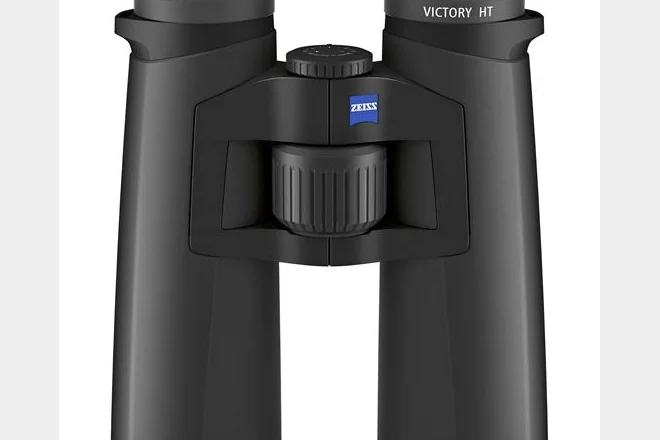Zeiss Victory HT 8x42 binocular
Back in July 2012, Zeiss invited interested parties to preview the company’s new Victory HT binoculars, which replaced the 42 mm models in its highly acclaimed FL range. The latter had been selling well since being launched more than eight years ago and I was impressed with their performance – particularly the brightness of the image they delivered. How could they be improved? Cue the HT.
HT stands for ‘high transmission’ and in this instance it refers directly to the transmission of light from the subject, through the binocular, to the eye. Having achieved a minimum, guaranteed 95 per cent light transmission, Zeiss is confident enough to market the two models in the HT range as the “brightest premium binoculars in the world”.
Zeiss is keen to underline the fact that the high performance of this binocular is most evident under conditions of low light intensity. The short days and predominantly miserable weather of December 2012 provided ample opportunity to put this to the test.
Before embarking on that, however, it’s worth pointing out that light transmission isn’t the only enhanced performance aspect of the new HTs. The range represents a complete redesign, with improved ergonomics a key consideration in the design and build of the two models. There’s a big improvement aesthetically, too – the ribbed, tubby barrels of the old FL now replaced by a sleek, elegant, more modern body. Zeiss has followed the recent trend in using magnesium alloy for the body, moving away from the polycarbonate of the FL. The market perception which associates magnesium with ‘quality’ is, however, a false one as polycarbonate is by far the stronger material.
The focusing wheel, a couple of millimetres shorter than the FL’s, is set further forward within a protective ‘double-link’ bridge, while the body is a couple of millimetres longer. This all adds up to improved balance and more comfortable operation. I found it easy to hold and to focus with just one hand, the narrowness and positioning of the bridge allowing me to curl my fingers around the body in the same manner as if I was using a ‘true’ open-bridge binocular.
Approximately 1.8 clockwise rotations take the image from close focus to infinity, compared with about 1.2 in the FL. This is a result of what Zeiss refers to as “comfort focus” or, to put it differently, the focusing mechanism is now less sensitive but more precise, making it easier to achieve a really sharp image. Another big difference between this model and the FL is the dioptre adjustment. It’s now reduced to a small, narrow, stiffly turning wheel separated from the main focusing wheel by part of the bridge. This design ensures it will not become accidentally moved from its setting, and it also click-stops at the midpoint of the incremental setting scale.
So, with the design and engineering seemingly beyond reproach, how do the optics measure up? The addition of the new Schott high transmission glass elements to the system, along with the fluoride lenses and the proven Abbe-König prism system, may well have elevated this binocular to a new high in image refinement. In the field it performed extremely well indeed.
During normal daylight, when it was easy to assess image characteristics, I discovered totally natural, strong, bright subject colours against a generally neutral colour rendition. Sharp to the edge and with minimal chromatic aberration, there was some curvature of field at the periphery of the image, although seemingly less than that exhibited by the FLs.
I spent a good deal of time with this binocular as the late afternoons slipped into dusk. Its performance in terms of maintaining brightness and upholding colour was certainly very impressive. The plumage detail on distant Redwings was prominent and crisp as they took a pre-roost drink from a stream, and the salmon pink of Goosanders was almost glowing in the failing light when coming in to roost on a local suburban lake. These were just two of many memorable instances in which the HT considerably enhanced the experience.
So, yes, this is undoubtedly an exceptional binocular which I found a joy to use, even down to the articulated objective lens cover that hangs off the lanyard by its own quickly detachable cord – a nice detail. I would struggle to find any negative aspects but I suspect it might not be compact enough for birders for whom minimal size is an important factor in choosing a binocular, whatever its performance. Although the £1,600 price tag may at first appear high, the HT is still significantly less expensive than other generally acknowledged high-performance binoculars currently on the market. I would strongly recommend checking it out.
Tech spec |
|
Price: £1,600 Size: 160x128 mm Weight: 785 g Field of view: 136 m at 1,000 m Close focus: 1.9 m Gas-filled: yes Waterproof: yes Guarantee: 10 years |


